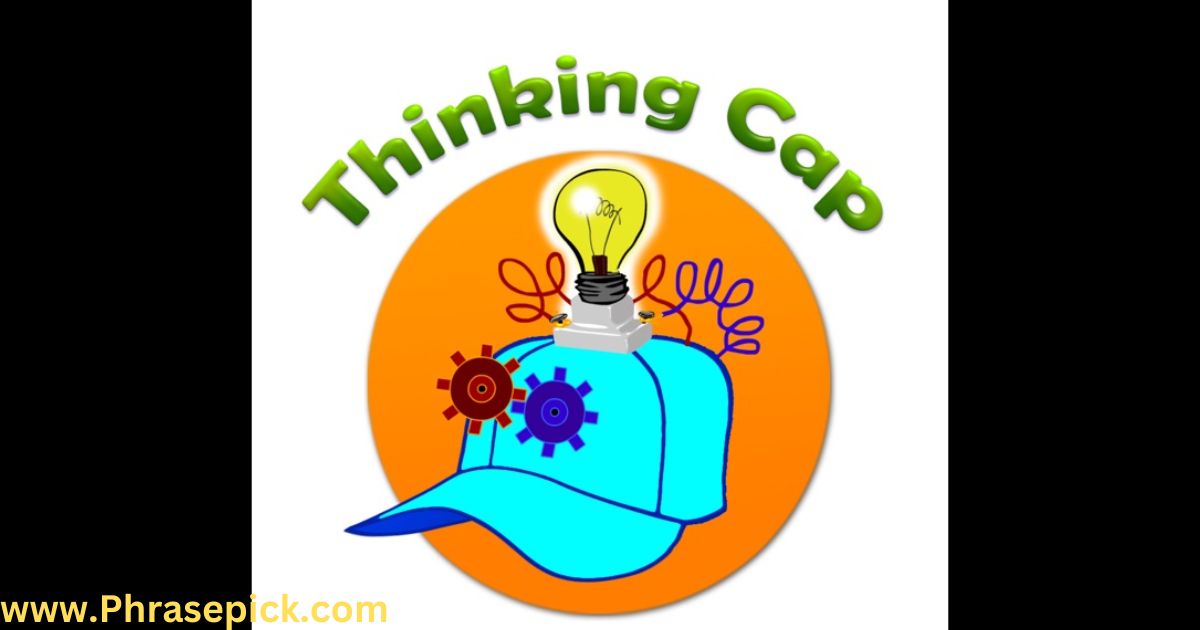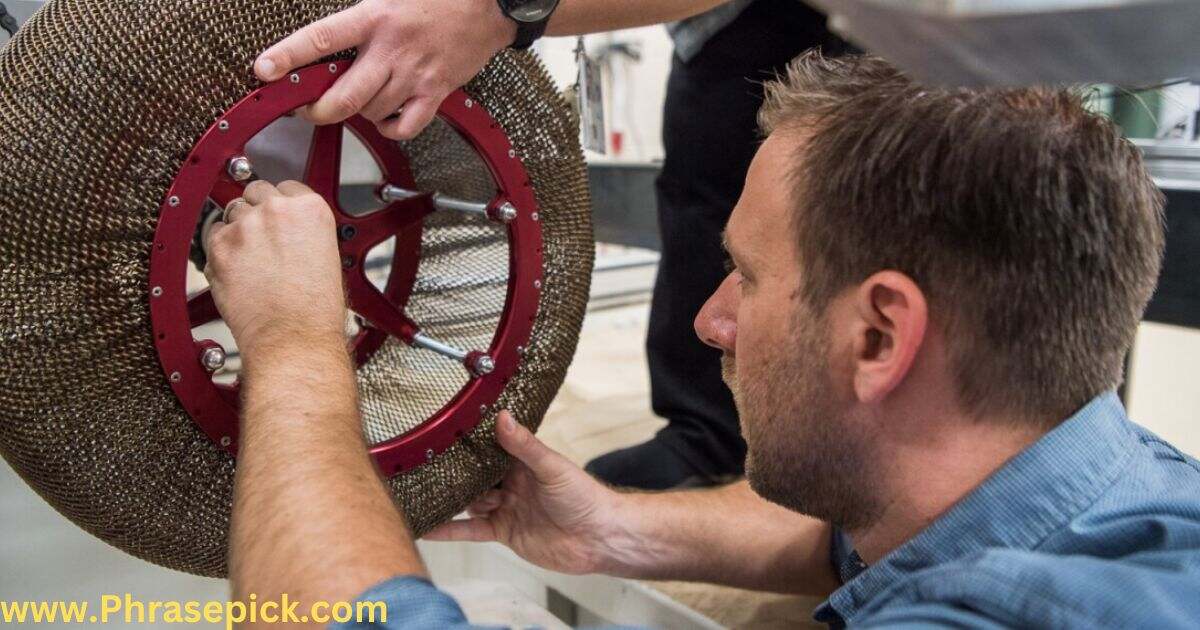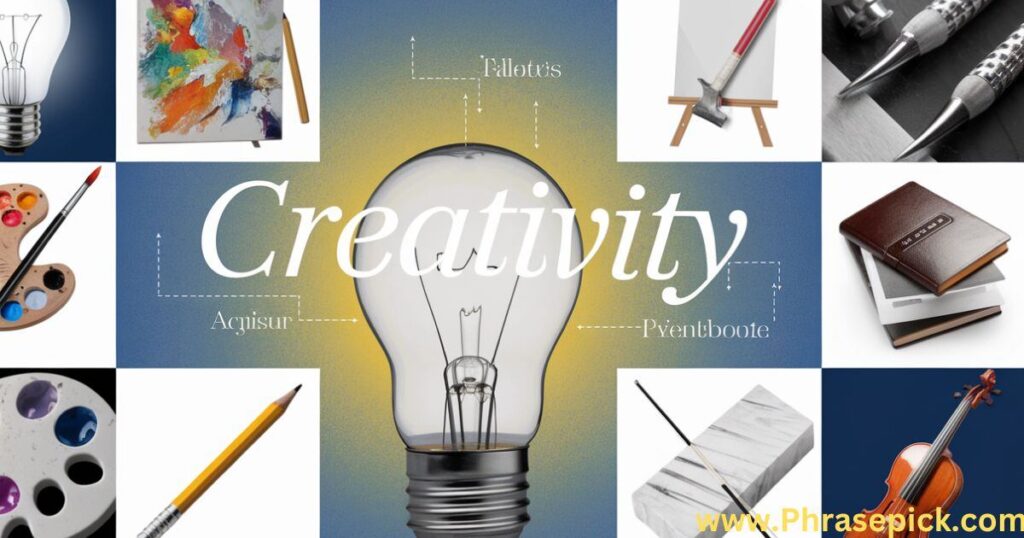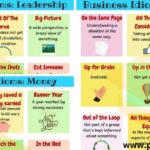Creativity fuels innovation and breathes life into our daily routines. Whether you’re brainstorming 30 idioms for creativity ideas for a new project or looking to spice up your everyday conversations.
Idioms about creativity can add a dash of color to your language. Let’s dive into 30 popular idioms that celebrate creative thinking and rare ideas.
1. Think Outside the Box
This classic idiom encourages us to Idioms for Creativity approach problems from new angles. It means considering solutions that might not be obvious at first glance.
Example scenario: In an email to her team, marketing manager Sarah writes:
“Team, our latest campaign isn’t gaining traction. Let’s think outside the box for our next brainstorming session. I want to hear your wildest ideas!”
2. Back to the Drawing Board

When an idea doesn’t pan out, it’s time to start fresh. This phrase suggests returning to the planning stage to rework a concept from scratch.
Example scenario: After a product launch flops, CEO Mark tells his development team:
“Well, folks, looks like we’re back to the drawing board on this one. But don’t worry – our next version will knock their socks off!”
3. Connect the Dots
This idiom refers to linking different ideas or pieces of information to form a complete picture or solution.
Example scenario: Detective Johnson briefs his partner:
“We’ve got a lot of clues, but they don’t make sense yet. Let’s try to connect the dots and see if we can crack this case wide open.”
4. A Lightbulb Moment

When inspiration strikes suddenly, we call it a lightbulb moment. It’s that instant when everything clicks into place.
Example scenario: During a team meeting, Emma exclaims:
“I just had a lightbulb moment! What if we combine our two best-selling products into one super-product?”
5. Break the Mold
To break the mold means to do something in a completely new and unexpected way, challenging conventional wisdom.
Example scenario: Fashion designer Lila tells her assistant:
“This season, we’re going to break the mold. I’m thinking neon colors and asymmetrical cuts – something no one’s seen before!”
6. Push the Envelope

This phrase means to extend the boundaries of what’s possible or acceptable, often boldly or experimentally.
Example scenario: Film director Alex addresses his crew:
“For this scene, I want to push the envelope. Let’s use that new camera technique we’ve been experimenting with.”
7. Get the Creative Juices Flowing
When we need to stimulate our imagination, we might say we need to get our creative juices flowing.
Example scenario: Writer’s block got you down? Try this trick to get those creative juices flowing: Set a timer for 10 minutes and write non-stop, no matter how silly it sounds!
8. Put on Your Thinking Cap

This playful idiom means to concentrate and think hard about a problem or task.
Example scenario: Teacher Ms. Thompson tells her class:
“Alright, kids, put on your thinking caps. Idioms for Creativity We’re about to tackle some tricky math problems!”
9. Spark of Genius
A sudden brilliant idea or invention is often called a spark of genius.
Example scenario: In his autobiography, inventor Dr. Chen writes:
“The design for my revolutionary battery came to me in a spark of genius during my morning shower.”
10. Burn the Midnight Oil

When someone works late into the night, especially on a creative project, they’re said to be burning the midnight oil.
Example scenario: Artist Maria emails her gallery owner:
“I’ve been burning the midnight oil to finish this collection. Can’t wait for you to see it!”
11. Go with the Flow
This idiom suggests adapting to and working with the current situation rather than fighting against it.
Example scenario: Jazz musician Ray advises his young protégé:
“When you’re improvising, you’ve got to go with the flow. Let the music guide you.”
12. Out of Left Field
When an idea comes out of left field, it’s unexpected and often creative or unusual.
Example scenario: During a product development meeting, Tom suggests:
“This might be out of left field, but what if we made our vacuum cleaners smell like fresh-baked cookies?”
13. Think on Your Feet
Being able to think on your feet means coming up with quick, clever solutions at the moment.
Example scenario: Improv coach Samantha encourages her students:
“Remember, the key to great improv is thinking on your feet. Trust your instincts and go for it!”
14. Reinvent the Wheel

While often used negatively, reinventing the wheel can sometimes lead to innovative thinking.
Example scenario: In a company-wide email, CEO Lisa announces:
“Our goal this quarter is to reinvent the wheel. Let’s take a fresh look at our core product and see how we can make it even better.”
15. Paint with a Broad Brush
This idiom means to describe or deal with something in a general way, without focusing on specific details.
Example scenario: Art teacher Mr. Lee instructs his class:
“For this exercise, I want you to paint with a broad brush. Don’t worry about the details – focus on capturing the overall mood of the scene.”
16. Color Outside the Lines

To color outside the lines means to think or act unconventionally, often leading to creative solutions.
Example scenario: Advertising executive Karen briefs her team:
“This client wants something fresh. Let’s color outside the lines on this campaign and really wow them.”
17. Get the Ball Rolling
This phrase means to start a process or project, often with the implication of generating momentum.
Example scenario: Project manager David emails his team:
“To get the ball rolling on our new app, I’ve scheduled a brainstorming session for tomorrow. Bring your wildest ideas!”
18. Put a Spin on It
When you put a spin on something, you present it in a new or interesting way, often changing how people perceive it.
Example scenario: PR consultant Anna advises her client:
“Let’s put a positive spin on this setback. We can frame it as a learning opportunity that will lead to even better products in the future.”
19. Break New Ground
Breaking new ground means doing something innovative that hasn’t been done before.
Example scenario: In her TED Talk, scientist Dr. Patel declares:
“With this research, we’re breaking new ground in the fight against climate change. Our approach could revolutionize how we produce clean energy.”
20. Shake Things Up
To shake things up means to make major changes, often to improve Idioms for Creativity in a situation or generate new ideas.
Example scenario: New team leader Mike announces in a meeting:
“I know change can be scary, but I think it’s time we shook things up around here. Any suggestions for improving our workflow?”
21. Think Big

Thinking big means considering ambitious ideas or plans without limiting yourself.
Example scenario: Entrepreneur Zoe motivates her startup team:
“Don’t be afraid to think big, everyone. We’re not just making an app – we’re changing the way people communicate!”
22. Ahead of the Curve
Being ahead of the curve means being more advanced or innovative than others in your field.
Example scenario: Tech reviewer Alex writes in his blog:
“Once again, this company proves it’s ahead of the curve with its latest smartphone release. The features are like something out of a sci-fi movie!”
23. Have a Eureka Moment
A eureka moment is a sudden realization or flash of inspiration, named after the famous exclamation attributed to Archimedes.
Example scenario: Novelist Pat tells his writing group:
“I was stuck on the ending for weeks, but I had a eureka moment in the shower this morning. Now I can’t wait to finish the book!”
24. Blaze a Trail
To blaze a trail means to be a pioneer in a particular field or activity, often inspiring others to follow.
Example scenario: In her graduation speech, Dean Thompson encourages the students:
“As you leave these halls, remember: you have the power to blaze a trail in your chosen field. Don’t be afraid to be the first!”
25. Go Back to the Drawing Board

Similar to “back to the drawing board,” this phrase emphasizes the need to start over with a fresh perspective.
Example scenario: After a failed experiment, scientist Dr. Lee tells her team:
“Well, these results weren’t what we expected. Let’s go back to the drawing board and rethink our approach.”
26. Think on One’s Feet
This idiom means to react quickly and effectively to an unexpected situation.
Example scenario: Sales manager Rob compliments his team member:
“Great job in that meeting, Sarah. When the client raised those unexpected objections, you thought on your feet!”
27. Push the Boundaries
Pushing the boundaries means testing or extending the limits of what’s possible or acceptable.
Example scenario: In her artist statement, sculptor Maya writes:
“My work aims to push the boundaries of what we consider sculpture. I want viewers to question their assumptions about art and space.”
28. Have a Stroke of Genius
A stroke of genius is a sudden brilliant idea or inspired action.
Example scenario: Chef Jamie tells his sous chef:
“Adding that hint of lavender was a stroke of genius! It elevates the whole dish.”
29. Put a New Spin on Things

Similar to “put a spin on it,” this phrase suggests presenting something familiar in a fresh, new way.
Example scenario: Music producer Liam tells his artist:
“I love the original, but let’s put a new spin on things for the remix. How about we try a different tempo and add some electronic elements?”
30. Dream Big

Dreaming big means having ambitious goals and unconventional ideas, often beyond what seems immediately possible.
Example scenario: Motivational speaker Tanya encourages her audience:
“Don’t be afraid to dream big! The most revolutionary ideas often start as ‘impossible’ dreams.”
Creativity Quiz
Test your understanding of these creativity idioms with this quick quiz
- When you come up with an unexpected solution, you’re thinking:
a) Inside the box
b) Outside the box
c) About the box
- If you need to start over with a new idea, you go:
a) Back to school
b) Back to sleep
c) Back to the drawing board
- A sudden moment of inspiration is often called:
a) A dark bulb moment
b) A lightbulb moment
c) A bright idea explosion
- When you want to be innovative and different, you try to:
a) Break the mold
b) Break the rules
c) Break the ice
- If you’re working late to finish a creative project, you’re:
a) Burning the candle at both ends
b) Burning the midnight oil
c) Burning bridges
- When you present something familiar in a new way, you’re:
a) Putting a lid on it
b) Putting it on ice
c) Putting a new spin on things
- If you’re a pioneer in your field, you’re:
a) Blazing a trail
b) Blazing mad
c) Blazing fast
- When you want to stimulate creativity, you need to:
a) Get the creative juices flowing
b) Get the creative rivers flooding
c) Get the creative oceans waving
- If you’re reacting quickly and cleverly to unexpected situations, you’re:
a) Thinking on your head
b) Thinking on your feet
c) Thinking about your hands
- When you have ambitious, seemingly impossible goals, you’re:
a) Dreaming big
b) Dreaming small
c) Daydreaming
Answers:
1-b
2-c
3-b
4-a
5-b
6-c
7-a
8-a
9-b
10-a
Applying Creativity Idioms in Different Fields
In Business
Creativity isn’t just for artists – it’s a crucial skill in the business world too. Companies that push boundaries and think outside the box often lead their industries. Let’s look at how some of our idioms apply in a business setting.
Brainstorming Sessions
Ever been in a meeting where ideas seem to be in short supply? That’s when someone might say, “Let’s get our creative juices flowing!” This is a call to action, encouraging everyone to loosen up and start generating ideas, no matter how wild they might seem at first.
Example scenario: Marketing director Jake kicks off a team meeting:
“Alright team, our competitor just launched a similar product. We need to get our creative juices flowing and come up with ways to differentiate ourselves in the market. No idea is too crazy – let’s hear them all!”
Innovation Strategies
In today’s fast-paced business environment, companies often need to reinvent the wheel to stay relevant. This doesn’t mean starting from scratch unnecessarily, but rather looking at existing products or processes with fresh eyes.
Example scenario: In her company blog, CEO Maria writes:
“At TechInnovate, we’re not afraid to reinvent the wheel. Our latest smartphone isn’t just an upgrade – we’ve reimagined what a phone can be from the ground up.”
Problem-Solving
When faced with a tough problem, business leaders often need to think on their feet. This ability to come up with quick, creative solutions can make or break a deal.
Example scenario: During a crucial client presentation, the projector fails. Sales rep Tom thinks on his feet:
“Looks like technology isn’t on our side today, folks. But that’s okay – let me paint you a picture with words instead. Imagine, if you will…”
In Education
Creativity is the lifeblood of learning. Educators who break the mold can inspire students to see subjects in new ways and develop a love for learning.
Innovative Teaching Methods
Teachers who color outside the lines often find new ways to engage students and make learning more effective and enjoyable.
Example scenario: History teacher Ms. Rodriguez tells her colleague:
“I decided to color outside the lines for our World War II unit. Instead of a typical essay, I’m having the students create podcasts from the perspective of historical figures. They’re getting into it!”
Encouraging Student Creativity
Helping students put on their thinking caps in a more literal sense can lead to improved problem-solving skills and more engaged learning.
Example scenario: Elementary school teacher Mr. Chen addresses his class:
“For our next science project, I want you all to put on your thinking caps. How can we use simple machines to solve everyday problems in our school?”
In Arts and Entertainment
The world of arts and entertainment is perhaps where we most expect to see people pushing the envelope and having lightbulb moments.
Breakthrough Performances
When an actor or musician delivers a particularly moving or innovative performance, we might say they’ve had a stroke of genius.
Example scenario: Music critic Alicia writes in her review:
“In her latest album, pop star Zara has had a stroke of genius. By blending classical instruments with electronic beats, she’s created a sound that’s both fresh and timeless.”
Creative Writing
Authors often need to burn the midnight oil to finish their manuscripts, especially when inspiration strikes at odd hours.
Example scenario: Novelist Sam tweets:
“Been burning the midnight oil for weeks now. This story just won’t let me sleep until it’s on paper!”
The Importance of Creativity in Problem-Solving
Creativity isn’t just about making art or coming up with wild ideas. It’s a crucial skill for problem-solving in all areas of life. When we approach problems from new angles, we often find solutions that aren’t immediately obvious.
Breaking Mental Blocks
Sometimes, the biggest obstacle to solving a problem is our prejudge concepts. That’s when we need to intentionally break the mold of our usual thinking patterns.
Example scenario: Life coach Rachel advises her client:
“You’ve been approaching this career change the same way for months without success. Let’s break the mold here. If money and time were no object, what would your ideal job look like?”
Connecting Disparate Ideas
Often, innovation comes from connecting ideas that don’t seem related at first glance. This is what we mean when we talk about connecting the dots.
Example scenario: In his TED Talk, inventor Dr. Patel explains:
“The idea for our water purification system came when I connected the dots between nature’s own filtration methods and modern nanotechnology. Sometimes, the solution is hiding in plain sight!”
Cultivating Creativity in Daily Life
Creativity isn’t just for special occasions or work-related tasks. We can cultivate innovative thinking in our daily lives too.
Everyday Problem-Solving
Next time you face a household problem, try to think outside the box for a solution.
Example scenario: DIY enthusiast Mia shares on her blog:
“When I couldn’t find a shoe rack I liked, I decided to think outside the box. I ended up repurposing an old ladder into a quirky, functional shoe storage solution!”
Hobby Exploration
Trying new hobbies or approaching familiar ones in new ways can help get your creative juices flowing in other areas of life too.
Example scenario: Hobbyist photographer Alex tells his friend:
“I was feeling stuck with my photography, so I decided to shake things up. I’ve been taking photos only in black and white for a month, and it’s pushed me to see composition in a new way.”
Overcoming Creative Blocks
Even the most creative people sometimes hit a wall. When this happens, it’s important to have strategies to get the ball rolling again.
Change of Scenery
Sometimes, a change of environment can help you see things in a new light.
Example scenario: Stuck on a work problem, project manager Lisa emails her team:
“I feel like we need a change of scenery to get our creative juices flowing again. How about we have our next brainstorming session in the park instead of the conference room?”
Collaborative Creativity
Two heads are often better than one when it comes to generating unconventional ideas.
Example scenario: Graphic designer Carlos messages his colleague:
“I’m hitting a wall with this logo design. Want to grab a coffee and put our heads together? Sometimes a fresh pair of eyes is all it takes to spark a new idea.”
The Future of Creativity
As we look to the future, it’s clear that creativity will only become more important. In a world where artificial intelligence can handle many routine tasks, human creativity becomes even more valuable.
Adapting to Change
Those who can think on their feet and adapt to new situations will thrive in an ever-changing world.
Example scenario: Futurist Dr. Yamamoto writes in her blog:
“As AI continues to advance, our ability to think creatively and adapt quickly will become our most valuable asset. The jobs of the future will go to those who can consistently think outside the box and bring a human touch to problem-solving.”
Interdisciplinary Creativity
The ability to connect the dots between different fields of knowledge Idioms for Creativity will likely lead to some of the most exciting innovations of the future.
Example scenario: At a tech conference, startup founder Raj pitches his idea:
“By connecting the dots between quantum computing and urban planning, we believe we can revolutionize how cities manage traffic flow, potentially saving millions of hours of commute time.”
Conclusion
Creativity is not just a trait it’s a skill that can be developed and honed over time. By incorporating these 30 idioms for creativity into our vocabulary and, more importantly, their underlying concepts into our thinking, we can all become more innovative and adaptable.
Remember, every great idea starts with someone willing to think outside the box, break the mold, or color outside the lines. So next time you face a challenge, don’t be afraid to put on your thinking cap and approach it from a new angle. You might just have a lightbulb moment that leads to something truly extraordinary.

James Smith is an experienced blogger at PhrasePick, where he shares his expertise in English grammar and figurative language. With a passion for simplifying complex topics, James creates engaging content that helps readers master the nuances of the English language.





